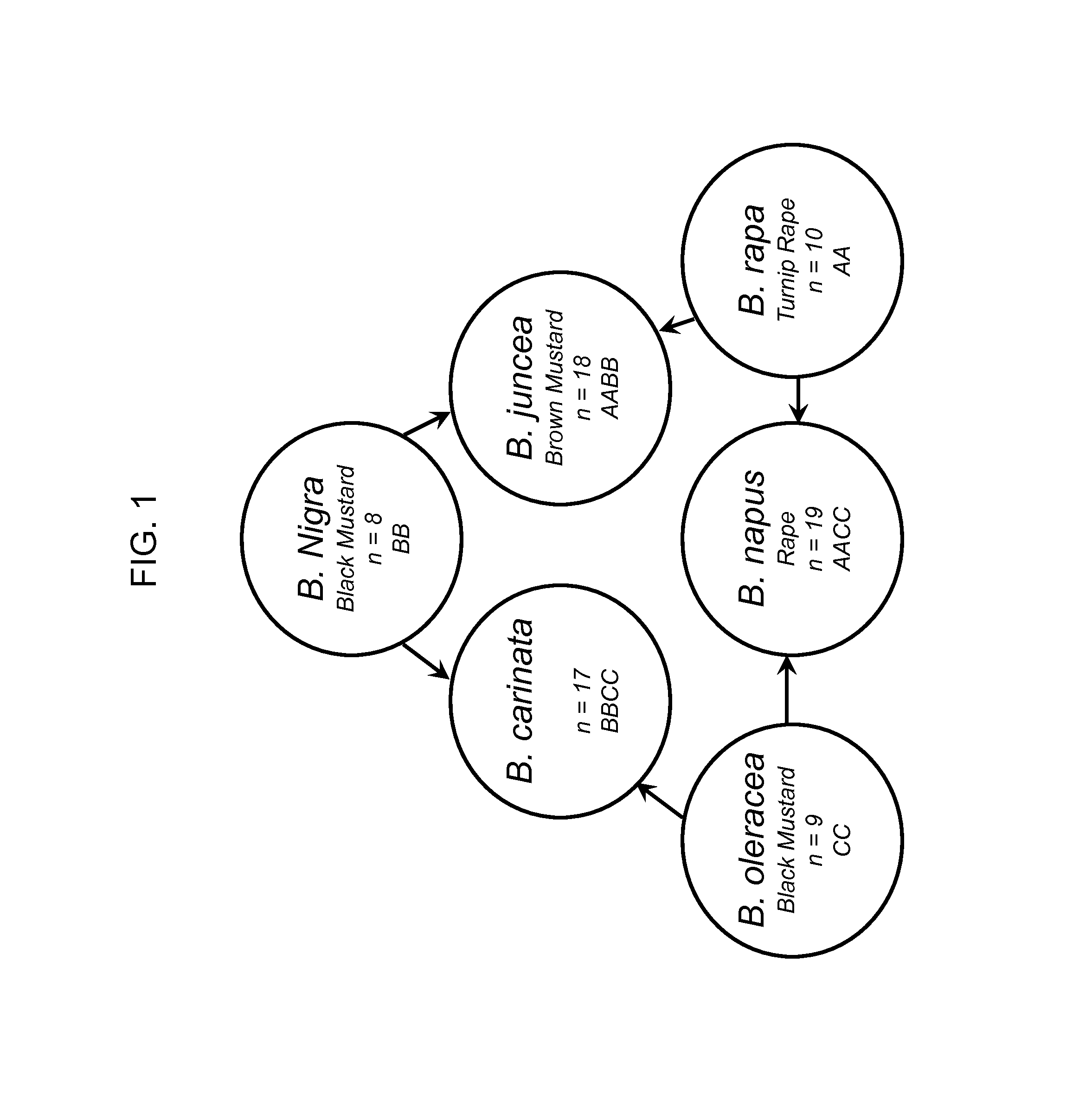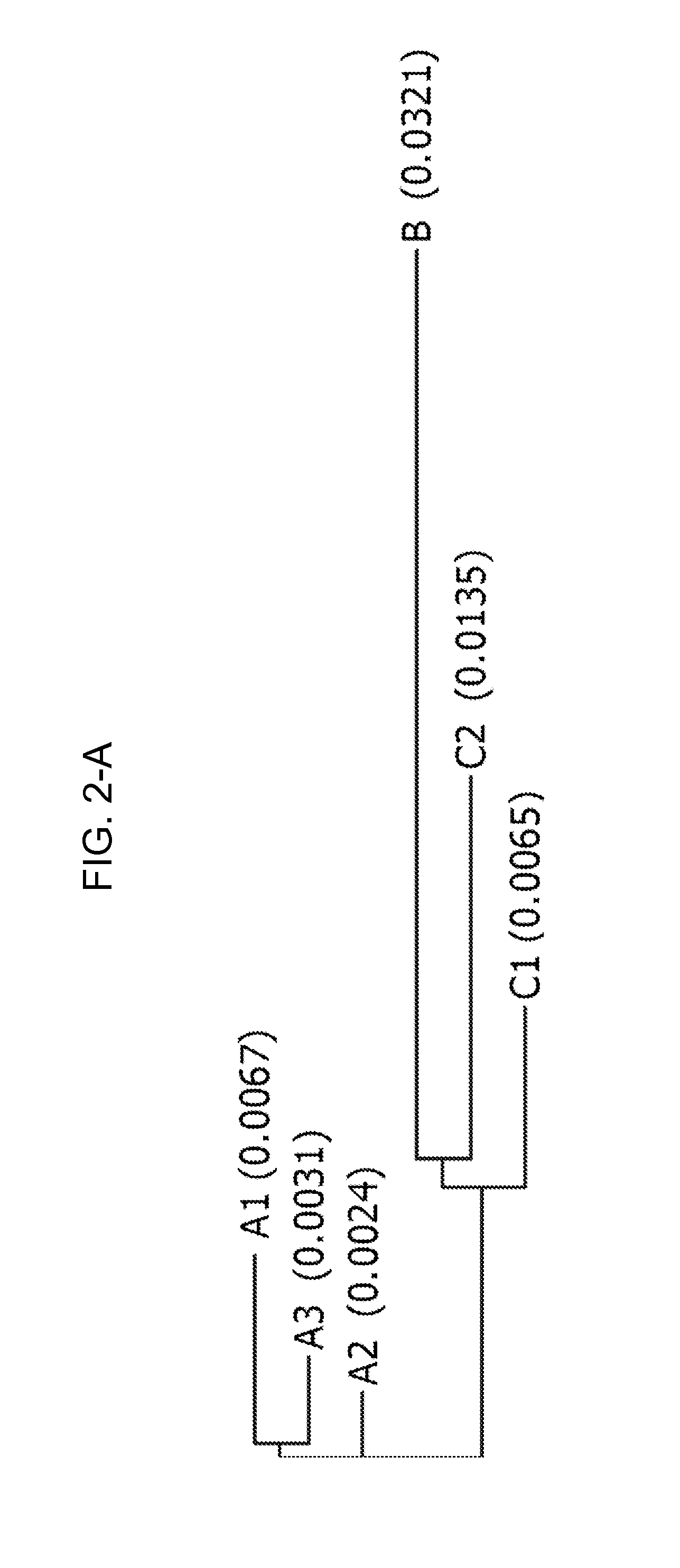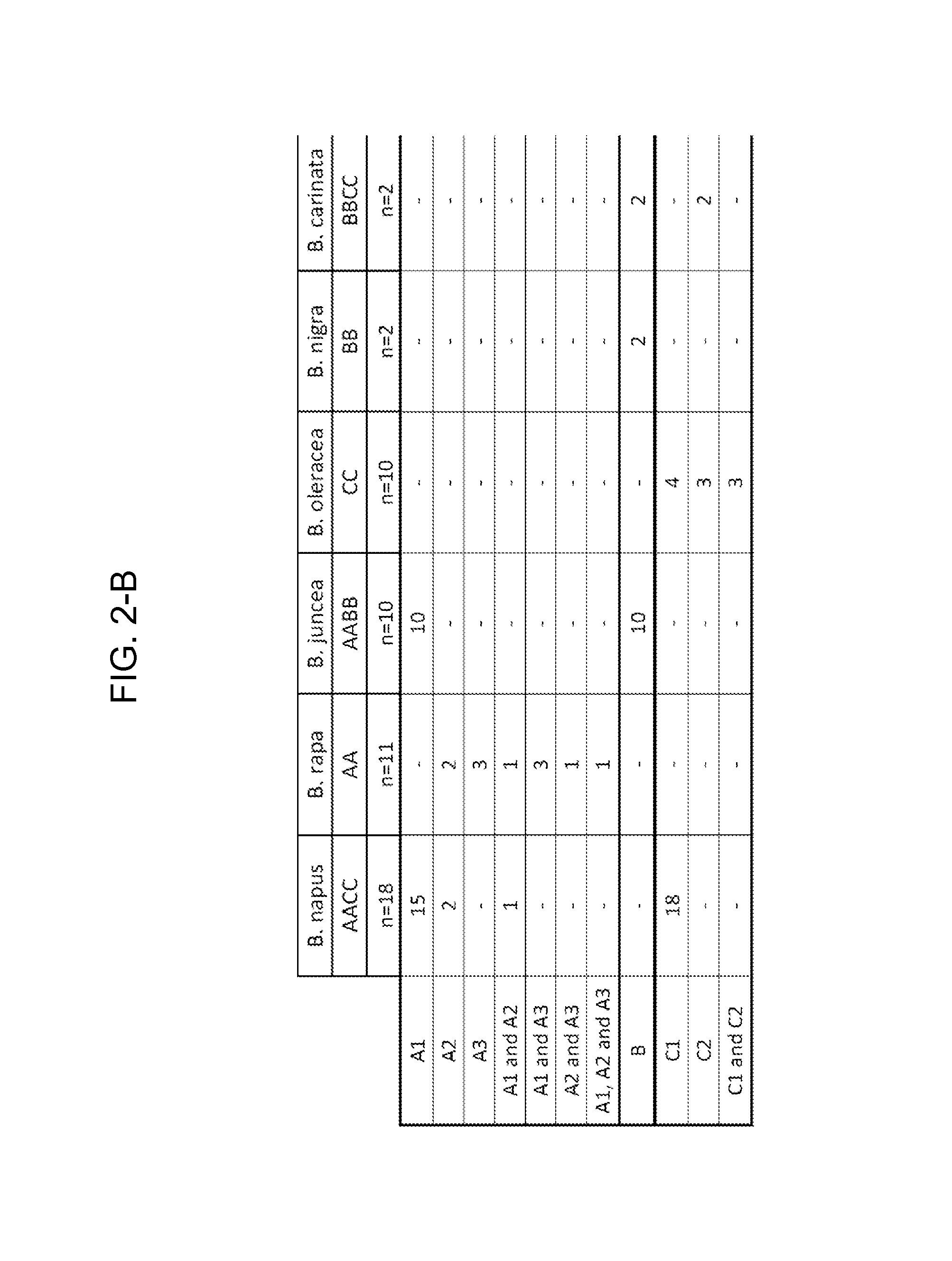Brassica genomic assays
- Summary
- Abstract
- Description
- Claims
- Application Information
AI Technical Summary
Benefits of technology
Problems solved by technology
Method used
Image
Examples
example 1
Development of A-Genome Specific Endogenous Reference System
Selection of Plant Material
[0163]Seeds from various countries were selected from the six Brassica species that make up the Triangle of “U”: B. carinata, B. juncea, B. napus, B. nigra, B. oleracea, and B. rapa (as well as B. rapa subspecies) varieties (FIG. 1). Brassica-related species that may be found in or around canola were also included in this study. This includes: Camelina sitava, Erucastrum gallicum, Thlaspi arvense, Sinapis alba and Sinapis arvensis (as well as S. arvensis subspecies). Seeds from other crops were also included: maize, rice, sorghum, tomato, cotton, soybean. The majority of seeds were received from Pioneer Hybrid Inc. in Georgetown, Ontario, Canada and also from USDA (United States Department of Agriculture) in Ames, Iowa and Geneva, N.Y. Table 1 shows the source of seeds used. For those seeds obtained from the USDA, the USDA Accession Numbers (ACNO) are included.
TABLE 1Seed Sources.ACNO(seeds fromUS...
example 2
Sequencing Regions of CruA, HMG I / Y and FatA
[0179]The primers that were selected resulted in amplification in all six species. To maximize the likelihood that amplification would occur on both genomes within the allotetraploid species (B. napus, B. juncea and B. carinata), additional clones were selected.
[0180]Once the PCR products were cloned from the multiple varieties within the six species, several clones (≧6) were selected for sequencing in order to increase the chance of capturing all potential diversity from the resulting PCR products. For the allotetraploid species, the goal was to obtain sequences from both genomes.
[0181]Subsequent to sequence analysis, some additional clones were selected and sequenced in order to fill gaps in genome coverage for the allotetraploid species.
example 3
Assigning Sequence Data into Consensus Representing Genomes
[0182]The consensus sequences were assigned to various consensus groups, and based on overlap of the base species (B. rapa, B. oleracea and B. nigra) and the allotetraploid species (B. napus, B. juncea and B. carinata), these were further assigned to either the A, B or C genome. Due to genetic variation of the A, B and C genomes between the species, in some cases more than one consensus sequence was defined for each genome.
CruA
[0183]For the CruA sequencing project, two A and two C genome consensus were identified. However, defining a consensus for the B genome was difficult. The cloned PCR products from B. juncea (AABB) all fell within the A consensus. In addition, several of the B. juncea varieties were difficult to PCR. The two B. carinata (BBCC) varieties resulted in cloned PCR products from the C genome only. The difficulty in determining a B consensus may be due to poor binding of the primers to the B genome or the B se...
PUM
| Property | Measurement | Unit |
|---|---|---|
| Purity | aaaaa | aaaaa |
Abstract
Description
Claims
Application Information
 Login to View More
Login to View More - R&D
- Intellectual Property
- Life Sciences
- Materials
- Tech Scout
- Unparalleled Data Quality
- Higher Quality Content
- 60% Fewer Hallucinations
Browse by: Latest US Patents, China's latest patents, Technical Efficacy Thesaurus, Application Domain, Technology Topic, Popular Technical Reports.
© 2025 PatSnap. All rights reserved.Legal|Privacy policy|Modern Slavery Act Transparency Statement|Sitemap|About US| Contact US: help@patsnap.com



